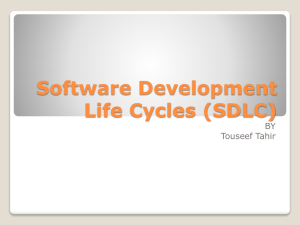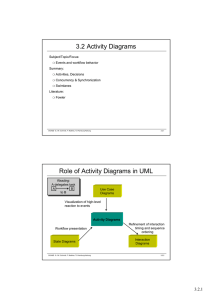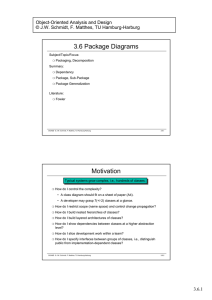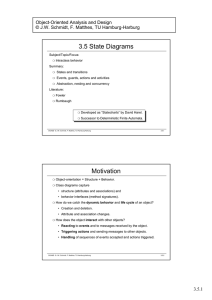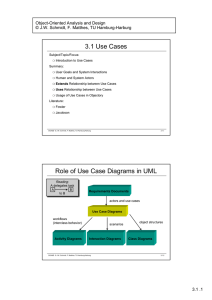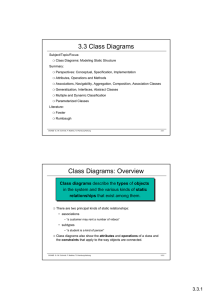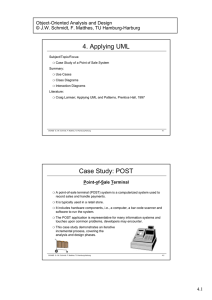Basic properties: • use case driven • architecture centric • iterative
advertisement
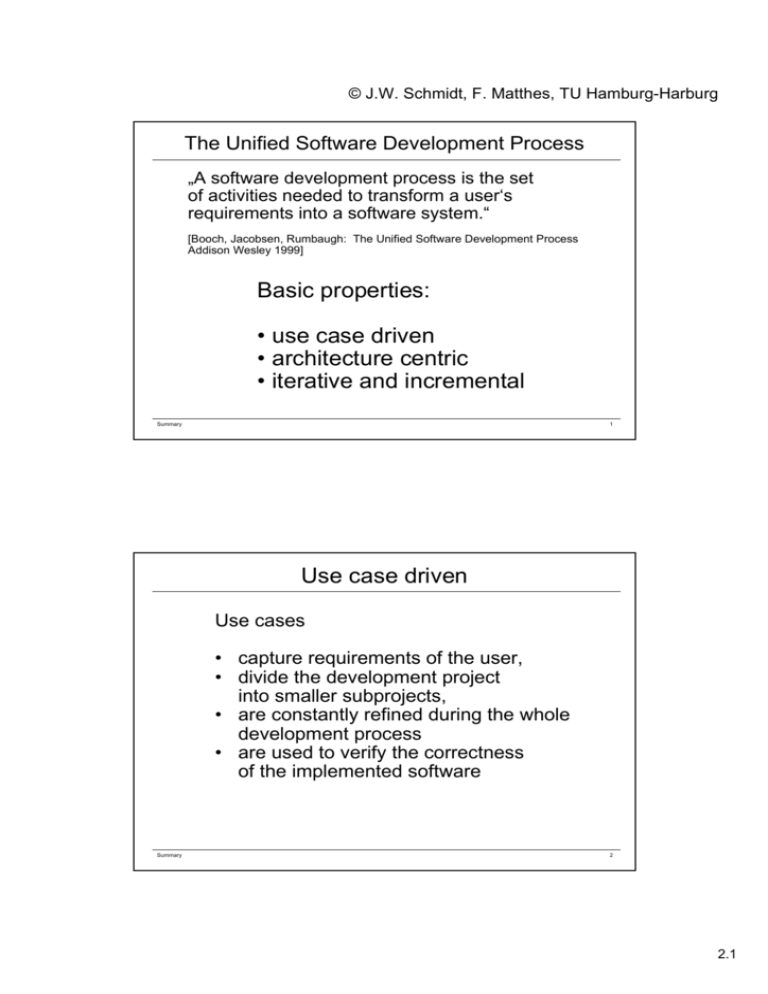
© J.W. Schmidt, F. Matthes, TU Hamburg-Harburg The Unified Software Development Process „A software development process is the set of activities needed to transform a user‘s requirements into a software system.“ [Booch, Jacobsen, Rumbaugh: The Unified Software Development Process Addison Wesley 1999] Basic properties: • use case driven • architecture centric • iterative and incremental Summary 1 Use case driven Use cases • capture requirements of the user, • divide the development project into smaller subprojects, • are constantly refined during the whole development process • are used to verify the correctness of the implemented software Summary 2 2.1 © J.W. Schmidt, F. Matthes, TU Hamburg-Harburg Architecture-centric ❍ Find structures which are • suitable to achive the function specified in the use cases, • understandable, • maintainable, • reusable for later extensions or newly discovered use cases. ❍ ... and describe them, so that they can be communicated between developers and users. Summary 3 The Unified Software Development Process ❍ Inception establishes the business rationale for the project and decides on the scope of the project. ❍ Elaboration is the phase where you collect more detailed requirements, do high-level analysis and design to establish a baseline architecture and create the plan for construction. ❍ ❍ Construction is an iterative and incremental process. Each iteration in this phase builds production-quality software prototypes, tested and integrated as subset of the requirements of the project. Transition contains beta testing, performance tuning and user training. Summary Inception Elaboration Construction 1 2 3 4 5 ... Transition 4 2.2 © J.W. Schmidt, F. Matthes, TU Hamburg-Harburg Incremental Iterations Elaboration Requirements binding contracts Analysis Design Transition Project deliverables Demonstration Integration Construction Executable modules Coding Debugging Summary 5 Construction Construction builds the system in a series of iterations. Each iteration is a project in itself. Use case 5 Use case 4 Use case 3 Iteration 5 Iteration 4 Iteration 3 Iteration 2 Use case 2 Iteration Use case 1 Use Case driven system increments Analysis Design Demonstration Integration Coding Debugging Summary During each iteration you go through a cycle of analyzing, designing, coding, debugging, integration and demonstration of the implemented use case by a prototype. 6 2.3 © J.W. Schmidt, F. Matthes, TU Hamburg-Harburg UML Diagrams Use Case Diagrams workflows scenarios Interaction Diagrams • Sequence D. • Collaboration D. structures Activity Diagrams inter-class behaviour, behaviour across classes of … interaction sequences between objects of classes in … Class Diagrams structuring is done by intra-class behavior, capture all possible state changes for objects of one single class Package Diagrams State Diagrams Summary 7 Unified Process Summary 8 2.4






